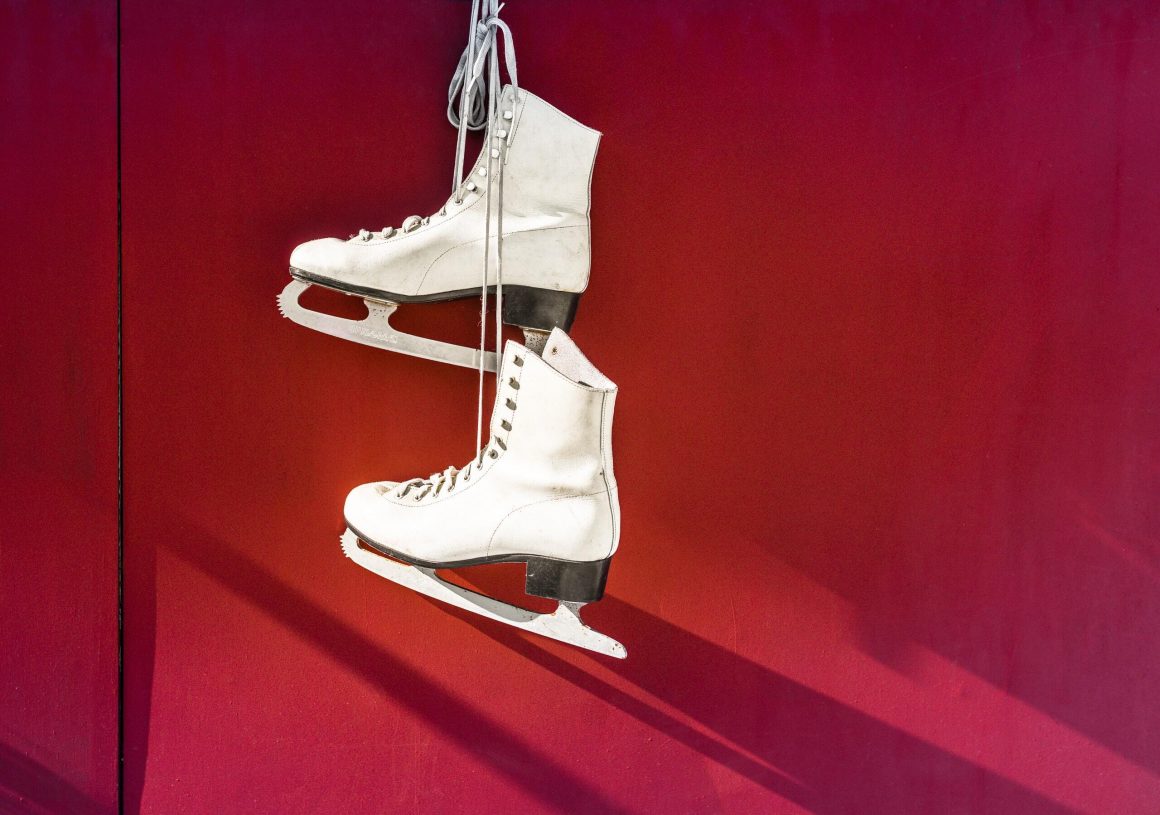
For Starters #4: Skating tips for beginners
By Avery Sharpe, October 13 2022—
Winter is just around the corner, which means skating season is too. Whether you want to learn to play hockey with friends or dream of spinning beautifully around an ice rink, the first step is to master the art of skating. Skating can be an intimidating activity for those who are new to it, but this beginner’s guide will give you all the best tips to make this winter sport fun and easy.
Before even stepping foot in an arena, you need to acquire a few items. Skates and helmets are rented easily at most rinks, but you will want to invest in some warm yet stretchy attire to give you as much range of movement as possible. Fleece-lined pants, an insulated coat and gloves will all serve you well. Remember, ice is not soft, and you should expect to fall at least once. Your clothes should help keep you warm as well as provide cushioning in case of any slips.
The next step for your skating journey is to actually get on the ice. There are many skating locations all throughout Calgary, but the most easily accessible one for many students will be the Olympic Oval right here on campus. The Olympic Oval conveniently offers public skating regularly, and is free of charge for most University of Calgary Active Living members and full time students. Practice is key to learning to skate, so simply showing up once or twice a week to get comfortable on the ice will do wonders for your skating ability.
As for the physical aspect, there are three major components that any beginning skater should learn. The first is how to balance and stay upright on the ice. To do this, bend your knees slightly to lower your centre of gravity and help keep you stable. When you first get on the ice, hold on to the edge of the boards or support yourself with a friend, and then focus on bending your knees. You should notice an instant shift in how secure you feel, and your feet should slide away from you less.
Once you have control of your balance, the next step is to get moving. Again, use the boards or a stable friend to keep you upright as you attempt to move your feet back and forth. Get used to how the blades feel on the ice. To go forwards, you will need to push your feet backwards and out. This curved motion will help your skates dig into the ice and give you a push of momentum. Once you have practiced this motion, try letting go of your supports to skate on your own. You will probably fall, but that’s a crucial part of the process. It teaches you how to get back up.
The third and final component any beginner skater should learn is how to stop. This is arguably one of the most difficult parts of skating, even for those who are experienced. Most beginners end up just running into a wall or falling as a way to stop themselves, which obviously is not recommended. Instead, try to bring the tips of your skates together, forming a wedge. This technique won’t stop you instantly, but will cause enough friction to slowly bring you to a rest.
All in all, skating is not an easy thing to learn. It takes time, practice, and considerable willpower to keep picking yourself up after each fall. However, it’s a super fun winter activity, and learning a new skill can be super rewarding. Also, try to remember that the learning process should be enjoyable. Make it a bonding activity with your friends to go practice each week, or treat yourself with a warm hot chocolate afterwards. I promise, the joys of skating will last a lifetime.
